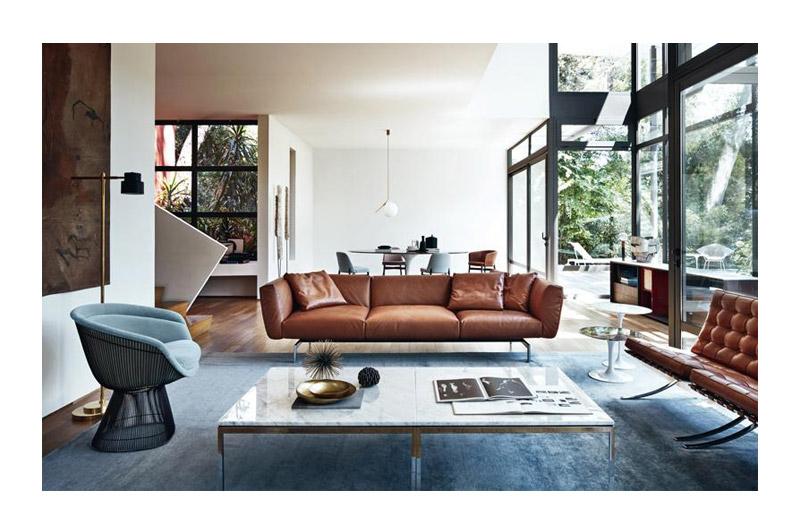- Home
- Buyer's Guides
- Choosing a Fabric
Choosing a Fabric
Fabric or leather? As a general rule, leather is more hard-wearing than fabric. However, there are some exceptions - see the leather section for more details. For busy homes, with young children, a hard-wearing leather is hard to beat. But some people prefer the feel of fabric - and some designs work better with fabric - so here's a guide to understanding which type of fabric best suits your needs.
Composition
Upholstery fabrics are typically made up of any combination of wool, viscose, nylon (polyamide), and cotton. Some fabrics also include other natural elements such as hemp, linen or silk, as well as various man made fibers. Woollen fabric is capable of withstanding a high degree of wear and tear, and has very little tendency to crease. Wool also resists dirt to a greater extent than other types of fabric because of the unique structure of the wool fibre. Wool also adjusts easily to temperature changes, thanks to the compactness of the fibres, so feels warm in the cold and cool in the heat. When wool is mixed with another yarn such as viscose or nylon, it usually gives a softer result. Although some pure wool fabrics feel very soft, such as Divina from Kvadrat. Fabrics can be woven in several different ways, so we suggest looking at several different types of fabrics to see which you prefer the look and feel of.
Durability
In the UK, fabrics go through the "Martindale" rub test to see how many rubs it can take before a tear appears. We recommend no less than 20,000, which is considered general domestic. Heavy domestic is deemed to be anything above 25,000. All the fabrics we work with have a Martindale result of at least 30,000. Many are much higher, such as Hallingdal by Kvadrat, which has a Martindale result of 100,000. This is extremely hard-wearing and should last a very long time. The abrasion value is one of the key factors to consider when choosing a fabric, especially in a busy home with children and/ or pets.
Lightfastness
This shows the ability of a fabric to retain its colour under the influence of light. During the test, the fabrics are illuminated using artificial daylight for a specified period. The evaluation scale ranges from 1 to 8, with 8 being the best value. An increase of one point equates to a doubling of the light fastness, i.e the same amount of fading takes twice as long. We generally recommend clients look for a minimum of 5 on the scale. If a fabric (or sofa) will be near lots of natural daylight (e.g in a conservatory, or near a large window) look for an even higher light fastness result to ensure the colour stays true for longer.
Fire Safety
The UK has the strictest rules in the world regarding fire safety of domestic upholstery - both foam and fabrics. All fabrics must satisfy Legal requirement BS 5852, Part 1 (cigarette + match test). This test specifically checks cigarette resistance of visible and non-visible parts of upholstery. Any fabric to be used on furniture in the UK, in a domestic setting, must have passed this test. If the cover fabric has not passed this test, there must be an interliner which passes the specified test. The furniture must carry a label which shows that the fabric (and filling) has passed the correct test. All reputable UK suppliers are aware of these regulations, which are in place for consumer welfare. Be aware when importing furniture from overseas as other countries do not have the same fire safety regulations and if a fire occurs in your home it can spread very quickly.












